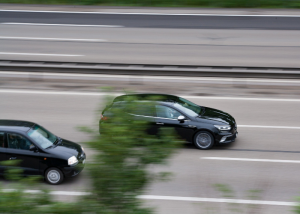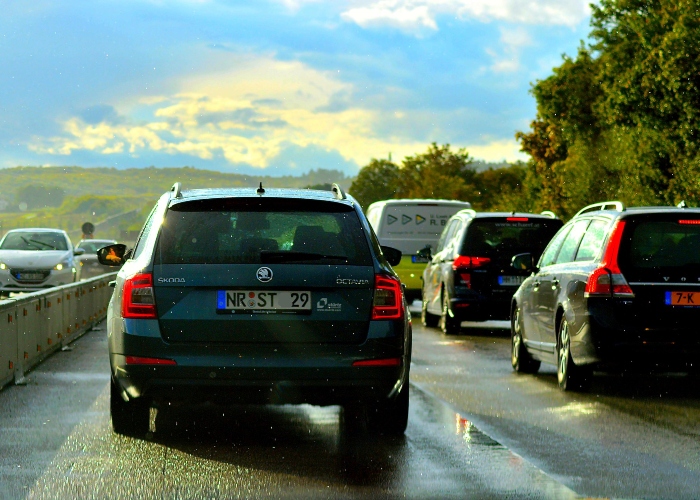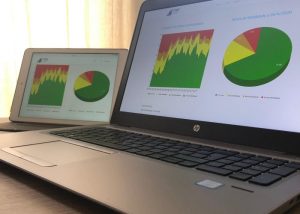PORTUGUESE NIGHT CONFINEMENT IS BETWEEN 85% AND 90%
At a particularly decisive moment in the taking of measures, namely regarding to the potential curfew concerns, according to the PSE Mobility Panel, night-time confinement is a behaviour that is already natural to the Portuguese.
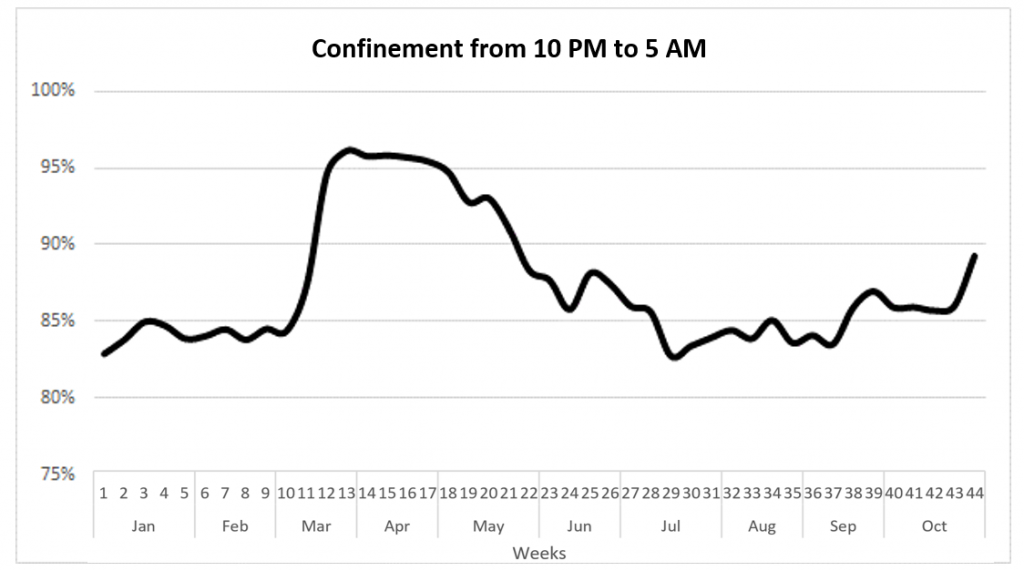
About the curfew it will not be very surprising that 81% of the Portuguese support curfew. In fact, the PSE information indicates that close to 90% of the Portuguese, in week 43, no longer leave home, from 10 pm to 5 am.
In fact, in the last 7 weeks, night confinement has always presented values between 85% and 90%.
PORTUGUESE RESPOND TO INCREASED INCIDENCE COVID-19
Regarding total confinement and mobility, 91% of Portuguese leave home during the week. After the confinement of the second quarter, the Portuguese returned to a new normality that is characterized by a change in daily habits and routines.
This change in habits is visible in the average daily confinement.
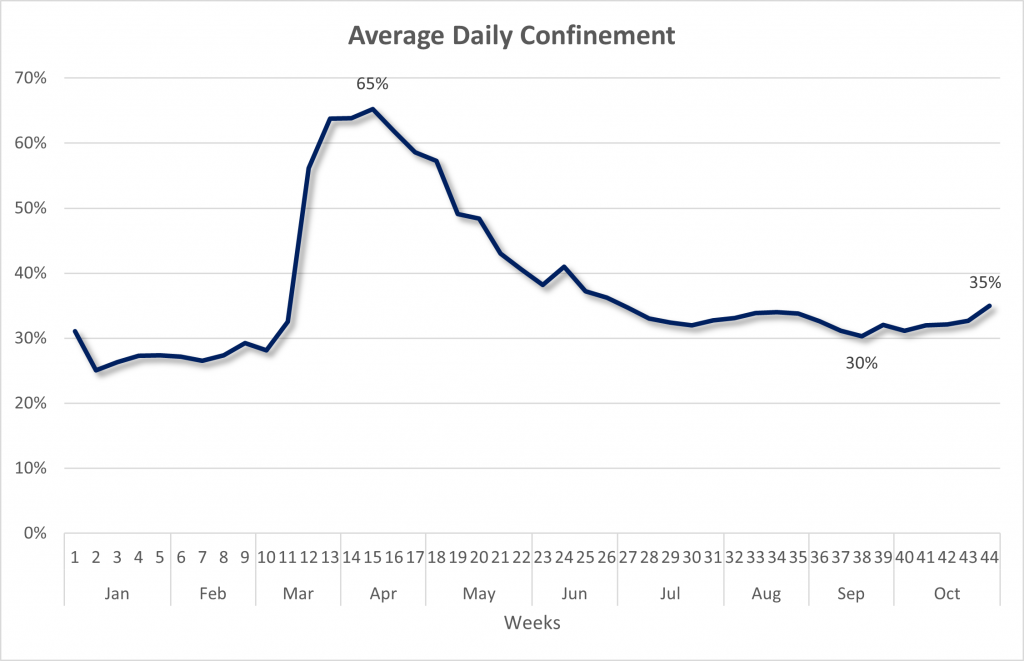
Although slight, the Portuguese confinement has an increasing trend in the last 7 weeks, being in the current week an average daily value of 35% of the population. The normal before the pandemic was around 25% to 28%.
This trend is due to the fact that there is feedback between mobility and the incidence COVID-19: If on the one hand more mobility creates greater incidence, it is also true that an increase in the incidence has a medium-term effect of reducing mobility in some segments of Portuguese population.
If Total Confinement increases at the April level, the impact on the economy is sure to be devastating. Even before new measures by the Government, once again the conscience of the Portuguese shows that they are proactively changing their behaviour. Even before the first declaration of the state of emergency, many people were already confined to their homes. Now we notice that there is a greater effort to go on with life, and to balance your normal life with some protection of public and personal health.
MOBILITY IS CRITICAL TO TRACK PANDEMIC PROGRESSION
Based on the real mobility and interactions of the Portuguese, PSE built models of epidemic propagation based on the agent (Agent-based models – see methodological note below).
Investigating the development of the disease through each individual, infection to infection, we highlight some of the study’s various conclusions:
About Mobility in general terms:
- Mobility explains 99.5% of COVID-19’s progression in the territory
- If the number of suspected cases of infection by individual mobility increases by 1%, the number of infections increases by an average of 0.16%.
About Superspreaders:
- Superspreaders (being individuals who contract the infection and are hypermobile) are agents with the ability to spread in space (as would be expected!). More than directly causing the volume of infections, they are contagious agents of other individuals in space.
- Superspreaders are agents that clearly “plant” the disease in locations in space. They are dispersing agents. This is their role in spreading the pandemic.
- Superspreaders are not directly responsible for the daily volume of infections. They are already secondary contacts that produce higher levels of infection.
As it is generally known that a “Total Confinement” has a naturally terrible impact on the economy, knowing the impacts that mobility has on the progression of the pandemic is essential to define policies that maintain economic activity and simultaneously control the pandemic and prevent a total or partial lockdown.
More than seeing the current incidence in the different Portuguese territories, through mobility it is possible to predict the areas of future incidence.
Predicting the future impact in terms of mobility, as well as knowing the mobility profiles of individuals during epidemiological surveys, can make decisive contributions to the monitoring of the pandemic and to decision-making.
Methodological Note
PSE is the only entity that studies the mobility of the Portuguese on an hourly basis, continuously. It daily checks the level of confinement at home and the displacement of the Portuguese throughout the pandemic Covid19. In this sense, it is possible to study how mobility affects the expansion of the pandemic. This PSE study is a panel that implies an APP installed on the mobile phones of the participating sample. It is highly accurate because it records the location via GPS, but also because it is based on a statistically representative sample of the universe under study. Technical note on the study, at the end.
Through the PSE Mobility Panel, as it is a continuous mediation, it is possible to identify not only individual mobility, but also interactions between individuals. To study the impact of mobility in the pandemic, PSE applied the principles and parameters of classic epidemiological models to epidemic-based models of agent-based spread.
Typically, the vast majority of the literature in the area of epidemiology and health that seeks to bring mobility closer to pandemic progression, is essentially based on mobility simulations. Not in the observed mobility. The typical option for mobility simulation exercises is a limitation that is justified by the difficulty of measuring effective mobility.
It is an example of the excellent contribution of the work of Hackl and Dubernet (2019), which uses a model based on the agent (a model of individual to individual contagion) through the simulation of mobility.
More than simulating mobility, the aim is to apply the mobility observed by the PSE mobility panel to the classic epidemic propagation model based on the agent.
The research adopts a Pooled SARAR methodology (autoregressive spatial model in panel), based on a panel of Portuguese municipalities with weekly observations from March to July 2020.
PSE, through the PSE Mobility Panel (technical note at the end), has been monitoring the mobility behavior of the Portuguese (www.pse.pt), admitting the possibility of assessing how the observed individual mobility explains / does not explain the spatial progression of the pandemic in Portugal. To this end, the observed individual mobility, measured through metrics in space, was applied to a classic epidemiological model based on the agent.
The classic epidemiological models, usually described by ordinary differential equations, such as the Epidemiological Model Susceptible, Infected and Recovered (SIR) and the Epidemiological Model Susceptible, Exposed, Infected and Recovered (SEIR), are based on a division of the population into several compartments through which the transitions from one class to another are modelled.
The disease covid19 has adopted isolation, social distance, and quarantine as the only control measures. The SEQIJR model (Siriprapaiwan, Moore and Koonprasert, 2018) is a generalization of the well-known SEIR model and the difference with this lies in the addition of two categories: Quarantine and Isolation. Measures associated with quarantine and isolation are essential in controlling the epidemic as they are effective methods of reducing contact between infected and susceptible populations.
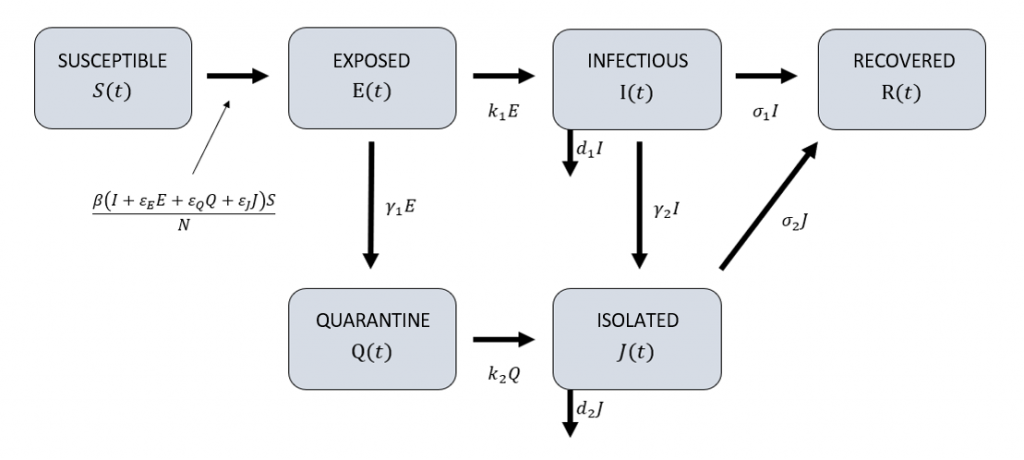
Figure 1 - Flowchart of the SEQIJR model (generalized by Gumel et al.)
A constraint that is pointed out to the model lies in the fact that it completely ignores the spatial effects of the spread of epidemics and, as such, it disregards all existing interactions between individuals because it models populations as a continuous entity. This limitation becomes important because, in the presence of an infectious disease, individual behaviour must be taken into account as it has a great influence on the dynamics of the epidemic.
The models of epidemic propagation based on the agent (Agent-based models) admit the existence of interactions between individuals, entitled as agents, investigating the development of the disease through each individual, infection to infection. With this, a necessary condition is the tracking of the contacts that each individual takes with other individuals in all relevant areas and social networks, such as work and school areas.

Figure 2 - Epidemic spread based on the agent in space and time. Source: Hackl, J. & Dubernet, T. (2019). Epidemic Spreading in Urban Areas Using Agent-Based Transportation Models.
Figure 2, present in the study by Jürgen Hackl and Thibaut Dubernet (2019), shows the spread of the infection over the course of a day, based on the history of only one infected agent. It is noticeable that, over the course of several hours of the day, the number of infected agents (which are marked in red in the spatial distribution) increases.
The studies in the literature, besides being scarce, are only based on simulated mobility, through simulation exercises that are based on the individual contagion of agents when simulating their daily actions. As such, they are not based on real mobility, as is the case of the study developed by PSE.
In summary, based on a number of initial infected individuals selected at random, the study was to identify, throughout the study period, all interactions between agents, and throughout the individual progression and interaction, individuals were classified as Susceptible, Exposed , Infectious, Recovered, as well as placed in Quarantine and Isolation to better reflect reality, following the SEQIJR model, as well as simulating the model parameters according to the known prescription and prescribed by scientific knowledge for the case of SARS outbreaks (S. Siriprapaiwan et al., 2018).
The aim of the investigation is to determine whether the way individuals move and interact is associated with the spatial dynamics of disease dissemination that is observed and reported daily by health services.
Taking into account that the numbers of positive cases disaggregated by municipality started to be provided from the situation report of March 23, the series for analysis was built from this date, which corresponds, in the annual calendar, to week 12 of year 2020. As such, it was based on a weekly panel whose spatial unit is the municipality, starting at week 12.
The objective is simple and clear: to determine whether the spatial progression of the COVID-19 pandemic in Portugal depends / does not depend on the mobility of individuals and their interaction.
To study the possible existence of this relationship, the Pooled SARAR econometric approach (Auto-regressive Spatial Model with Auto-regressive Error structure) was followed, as evidenced by the following equation:

Where:
y represents the total number of declared positive cases;
x the number of suspected infections based on mobility and interactions;
T_1,…, T_k the temporal dummy variables;
Wx is the average of the values of x for its neighbours;
Wy the average of the y-values for its neighbours;
Wu the spatial dependence that is present in the error term and ε the idiosyncratic error term.
Analyzing the coefficient associated with the variable LN_INF_MOB, and being the same highly significant, it is stated that if the number of suspected infections through mobility increases by 1%, it is expected that the number of infected people observed will increase by 0.16%.
Thus, there is evidence of statistical significance that the spatial dynamics expected by mobility helps to explain the spatial dynamics observed in the various Portuguese municipalities.
From the spatial analysis carried out, taking into account the estimated econometric models and the outcomes that can be drawn from them, the main conclusion consists of proof of the relevance of the observed mobility as an explanatory variable for the spatial dynamics of disease spread. In addition to the importance of this variable, in all models it was possible to prove that the estimated coefficients associated with spatial terms, as they are statistically significant, indicate the existence of spatial dependence and corroborate the importance of not ignoring these effects.
In other words, we were able to prove that the dynamics of mobility explains the dynamics of the pandemic.
As this is a contribution that encourages the continuous investigation of the pandemic movement, the present work suggests that approaches continue to be developed that allow the study of the phenomenon, both from a quantitative and qualitative point of view.
If the spatial descriptive approach demonstrates the existence of a strong spatial correlation in the incidence of covid19 cases in the municipalities, spatial predictive approaches should be explored to identify the location of future incidences.
OBSERVATION
This study has produced, since 2019, data that are applied, above all, in measuring the audience of outdoor advertising, but also to assist city councils in spatial planning and in the management of mobility and transport. And also in behavioral studies of mobility and “shopper”, for other companies and entities. The data are continuously produced, day after day.
TECHNICAL NOTE
This study is the PSE panel, with continuous data collection through location monitoring and means of travel via mobile application of a panel of representative individuals from the Universe over 15 years old, residing in the regions of Greater Porto, Grande Lisbon, North Coast, Central Coast and Faro District. This study implies an APP installed on the mobile phones of the participating sample. So we monitor the actual displacement of the population, at each hour of the day. This study is carried out 24 hours a day. The data are obtained rigorously, via GPS and with the consent of the monitored sample. For a universe of 6,996,113 individuals residing in the studied regions, the margin of error attributable to the study is 1.62% for a 95% confidence interval.
BIBLIOGRAPHIC REFERENCES
Arbia, G., (2014). A primer for spatial econometrics: with applications in R, 1ªEd. UK: Palgrave Macmillan UK.
Gumel, A.B. et al. (2004). Modelling strategies for controlling SARS outbreaks, Proc. R. Soc. Lond. Ser. B 271, pp. 2223–2232.
Hackl, J. & Dubernet, T. (2019). Epidemic Spreading in Urban Areas Using Agent-Based Transportation Models. Future Internet.
Perez, L & Dragicevic, S. (2009). An agent-based approach for modeling dynamics of contagious disease spread. International Journal of Health Geographics.
Siriprapaiwan, S. et al. (2018). Generalized reproduction numbers, sensitivity analysis and critical immunity levels of an SEQIJR disease model with immunization and varying total population size. Mathematics and Computers in Simulation. Vol. 146, pp. 70-89. Elsevier.
Timpka, T. et al. (2009). Population-based simulations of influenza pandemics: validity and significance for public health policy, Bulletin of the World Health Organization, SciELO Public Health, Vol. 87, p. 305–311.

